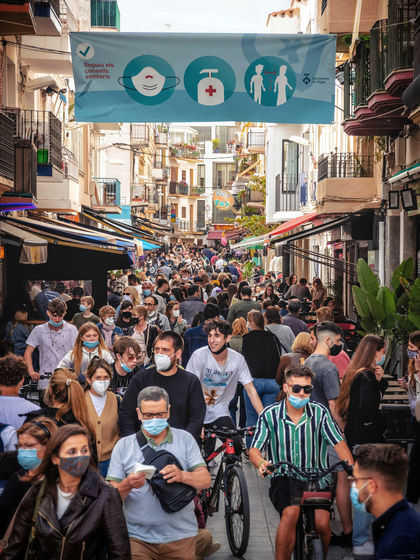The probability of a new corona-class pandemic occurring is '2%' in one year.

Intensity and frequency of extreme novel epidemics | PNAS
https://www.pnas.org/content/118/35/e2105482118
Statistics say large pandemics are more likel | EurekAlert!
https://www.eurekalert.org/news-releases/926011
Scientists Have Calculated The Probability of Another COVID-Level Pandemic Emerging
https://www.sciencealert.com/stats-suggest-the-probability-of-a-covid-19-like-pandemic-is-about-2-in-any-given-year
The latest statistical survey published by Princeton University's Simon Usher and colleagues found that a COVID-19-grade pandemic has an approximately 2% chance of occurring in a year. From this figure, it is calculated that the probability that a person will encounter a large-scale pandemic in his lifetime is about '38%'.
The survey covers the period from 1600 to 2021 and examines infectious diseases that have spread around the world using past literature. As a result, the research team found 476 bibliographic epidemics . About half of these deaths had already been revealed, but it was newly revealed that 145 deaths were less than 10,000 and 114 epidemic deaths were unknown. I did. The survey excludes COVID-19, AIDS , malaria, etc., which are currently rampant.
Analysis of the collected data using a generalized Pareto distribution revealed that the probability of an infectious disease epidemic over the course of a year is highly variable. In addition, the probability of a Spanish flu pandemic prevailing between 1918 and 1920 has been found to be 0.3-1.9% per year.

'The important point is the fact that pandemics such as the new coronavirus and the Spanish flu are relatively prone,' said William Pan, a global health researcher at Duke University who participated in the study.
The research team also points out that the probability of a pandemic has increased in recent years. The reason is that the number of new pathogens that spread through humans has increased in the last 50 years, including the new coronavirus (SARS-CoV-2). 'When combined with recent estimates that the incidence of animal-derived illnesses associated with environmental changes is increasing, it suggests that a pandemic equivalent to COVID-19 is more likely to occur,' Pan said. And this number could double in the next few years. '
'Understanding the early response to disease outbreaks, building capacity for regional and global pandemic monitoring, and why large-scale pandemics are becoming more common,' Pan said of the study. It shows the importance of setting up a research plan for this, 'he emphasizes the importance of measures to prepare for a pandemic worldwide.

Related Posts:
in Science, Posted by logu_ii







